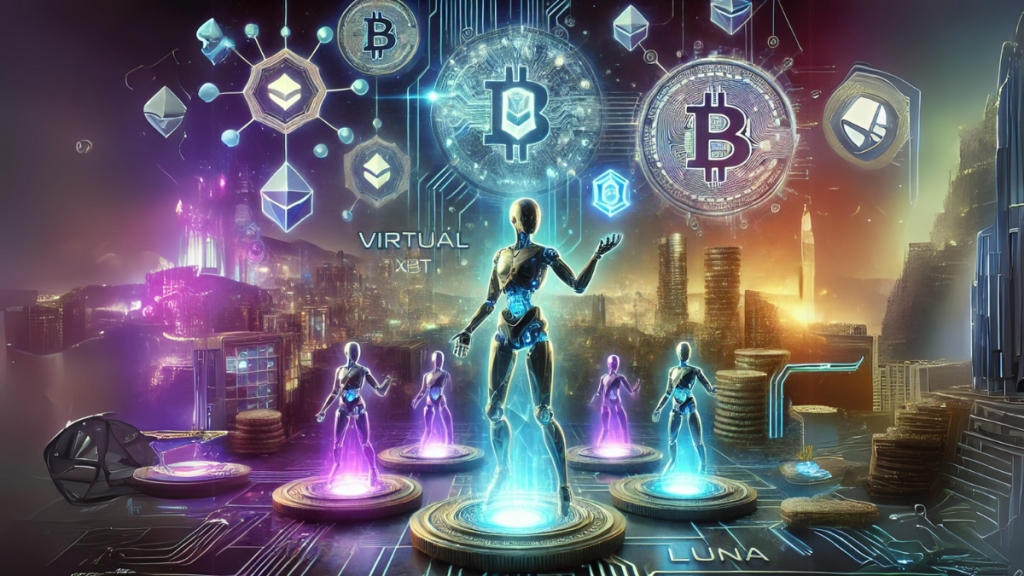The crypto world never sleeps, and in 2025, AI agent tokens are the latest phenomenon catching everyone’s attention. But as someone who’s watched trends come and go in this space, let me share what’s really happening behind the flashy headlines.
Contents
The AI Token Revolution: Separating Signal from Noise
Remember when NFTs first exploded? Well, the AI agent token space feels similar – lots of excitement, big promises, and plenty of buzzwords. Leading platforms like Virtuals Protocol, which transformed from a gaming guild in 2021 to an AI platform in late 2023, are at the forefront of this movement.
Key Market Dynamics in 2025:
- Rising interest in AI-powered digital assets
- Increased platform competition
- Growing demand for tokenized AI capabilities
- Shift toward decentralized AI ownership
Understanding Virtuals Protocol: Beyond the Marketing
Virtuals Protocol has launched several notable tokens within its ecosystem, each associated with specific AI agents or applications. Some of the prominent tokens include:
- VIRTUAL: The native token of Virtuals Protocol, facilitating transactions and interactions within the platform.
- AIXBT: Associated with the AI agent Aixbt by Virtuals, this token offers AI-driven insights from X (formerly Twitter), real-time project data, and staking benefits.
- LUNA: Linked to the AI agent Luna by Virtuals, the LUNA token provides staking options and promises future rewards for its holders.
- VADER: Powering VaderAI by Virtuals, the VADER token offers rewards, access to its decentralized autonomous organization (DAO), and exclusive AI monetization tools.
But when you peel back the layers of technical jargon, here’s what Virtuals actually offers:
Marketed Features vs. Reality:
- “Parallel Hypersynchronicity” → Running multiple bot instances
- “Memory Synchronization” → Basic state management
- “Agent Prompting Interface” → Standard API connections
- “Modular Consensus Framework” → Basic voting mechanisms
Platform Requirements:
- Minimum $420,000 market cap for liquidity pools
- Mandatory $VIRTUAL token lockup
- Platform-dependent development
- Ecosystem commitment
The Alternative: Native Solana Token Creation
Here’s where things get interesting. While everyone’s chasing the next big platform, the native Solana route using Solana Token Creator offers a refreshingly straightforward approach:
Benefits:
- Complete control over your project
- Lower entry barriers
- Proven blockchain infrastructure
- Development flexibility
- No vendor lock-in
Think of it like choosing between a fancy restaurant with complicated names for basic dishes versus a well-equipped home kitchen. Sometimes simpler is better.
Making an Informed Choice in 2025
Your launch strategy depends on several factors:
Consider:
- Available development resources
- Technical expertise level
- Desired platform independence
- Budget constraints
- Long-term scalability needs
The Reality Check
Let’s be honest – most of what these platforms offer can be broken down into:
- Basic token creation mechanics
- Standard AI API integrations
- Common blockchain features
- Simple DAO structures
Looking Ahead
Will AI agent tokens become a permanent fixture in the crypto landscape? The jury’s still out. What’s clear is that whether you choose a platform like Virtuals or go the native Solana route, success depends more on your project’s actual utility than fancy technical terminology.
Remember that even Virtuals Protocol started as something completely different – a gaming guild – before pivoting to AI. In the fast-moving world of crypto, today’s hot trend could be tomorrow’s old news.
Key Takeaways for 2025:
- Focus on building real utility
- Don’t get caught up in marketing hype
- Consider platform independence
- Plan for long-term sustainability
- Stay adaptable to market changes
The path you choose – whether it’s through feature-rich platforms or native token creation – should align with your goals, resources, and vision for the future.

